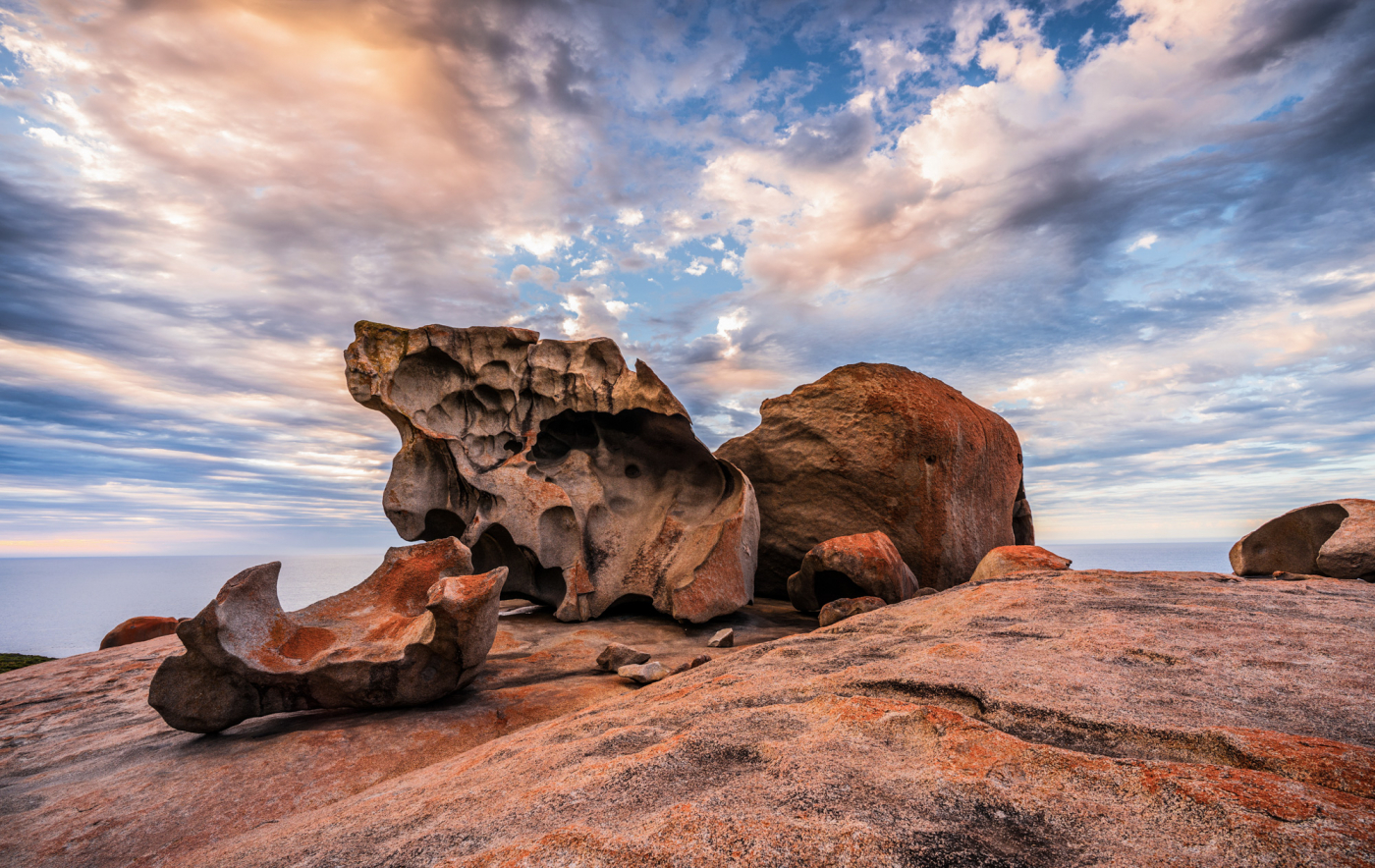
“A knock at the door. It’s the Kangaroo”
Neil D.A. Stewart spends a week on Kangaroo Island, the world’s most aptly named landmass

Neil D.A. Stewart spends a week on Kangaroo Island, the world’s most aptly named landmass

Forgive the early digression, but one of my favourite lines in literature – through the lens of Geoff Dyer, who frequently cites it in his own books – is in the diaries of nineteenth-century Parisian brothers-about-town Edmond and Jules de Goncourt, who begin one entry: “There is a knock at the door. It’s Flaubert.” The incongruity of the very banal and the very elevated prompts amusement. And somehow it was what came to mind our first evening on Kangaroo Island when, as we were being shown our accommodation in Oceanview Eco Villas by owners Tamsin and Tim Wendt, Tam paused, listened hard and went to the front door, opening it carefully to reveal a young female kangaroo, patiently waiting to be handfed a snack of raw almonds. Left orphaned as a baby, Katie was rescued and reared by the Wendts, who would stay awake all night in shifts to attend to her needs; now an adult with joeys of her own, she has reintegrated with the kangaroo community – but still pops round regularly to visit her foster family. “Careful,” Tam warns, closing the door behind us as we coo over Katie’s big round dark eyes and pat her woolly front, “or she’ll be in there and curled up on the sofa and never wanting to leave.”
I go through scorching sunshine and, seconds later, a chill zone as if cloud cover has dropped down around us
Lying just off the south coast of the Australian mainland – under an hour’s flight from Adelaide – Kangaroo Island is surprisingly large and environmentally varied. On a few hours’ drive around the east half of the island, I go through scorching sunshine and, seconds later, a chill zone as if cloud cover has dropped down around us. Ecologically, too, the island is diverse: later we learn that one little islet at the centre of a lake is a sort of evolutionary hothouse where a certain breed of snake adapts to small changes in its habitat in the space of two generations: evolution before your very eyes.
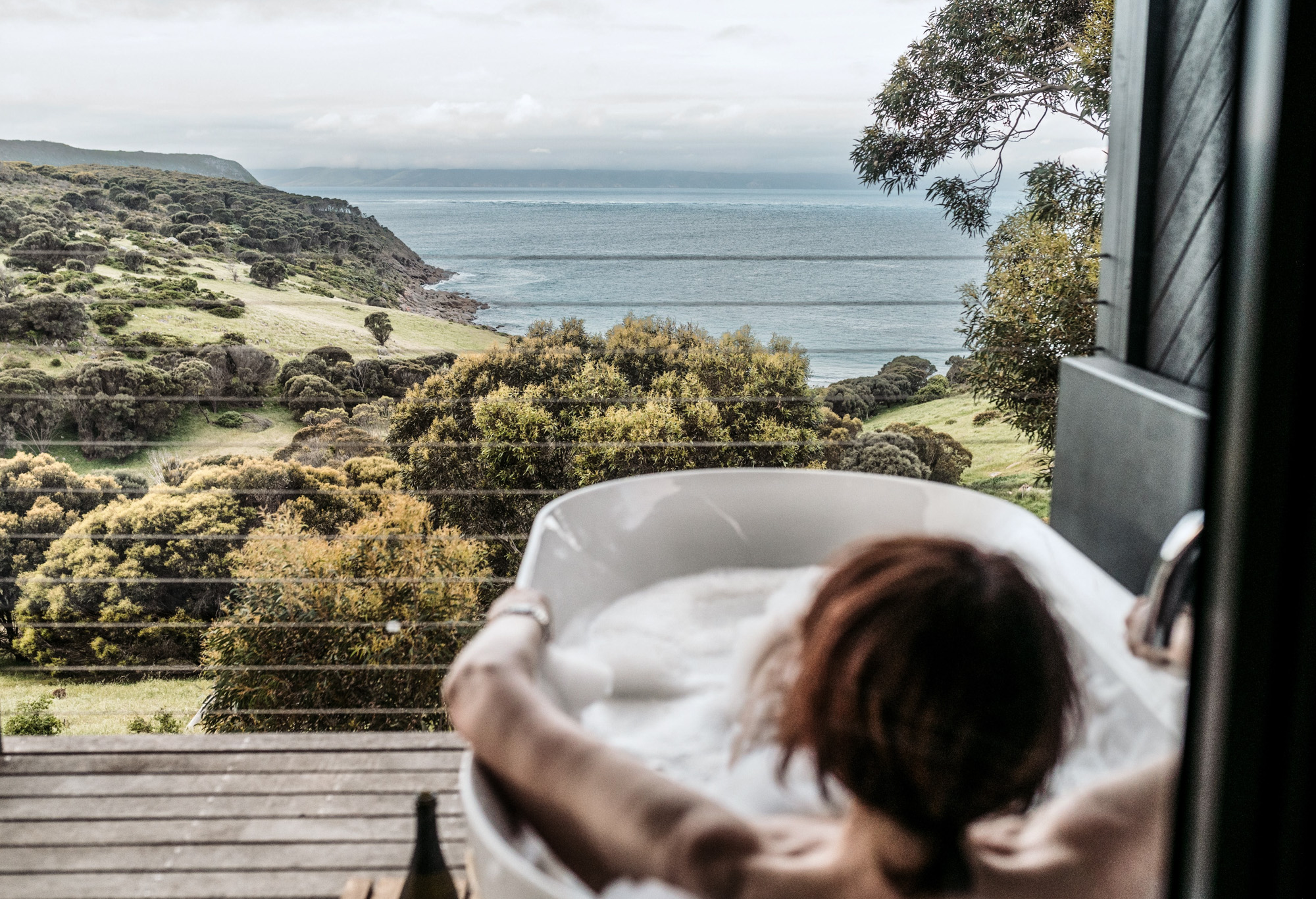
Sea Dragon Lodge
This I learned during a delightful afternoon with naturalist Dr Peggy Rismiller who lives with her partner, biologist Mike McKelvey, in a self-built wooden house in bushland, where kangaroos hop about tamely among the gums outside. Over tea, she gives us a crash course in echidna biology, habitats and behaviours – lamenting that we’ve come mid-Australian summer, these animals tend to disappear underground to stay cool, and indeed we don’t get to see one in the wild. Nonetheless, Peggy’s expertise is unparalleled – when she started studying the echidna in the mid-1980s, she notes, seven or eight fundamental questions about its life cycle, habitats and behaviour remained unanswered; she’s too modest to say it outright, but clearly she is the one who has answered them – and her enthusiasm for these odd, almost unique little animals is contagious. By the end of her impromptu lecture, including full-frontal images of the echidna’s four penises (“We don’t really know what two of them do,” she says wistfully) I was ready to ditch life in London and go off grid to study these remarkable animals myself.
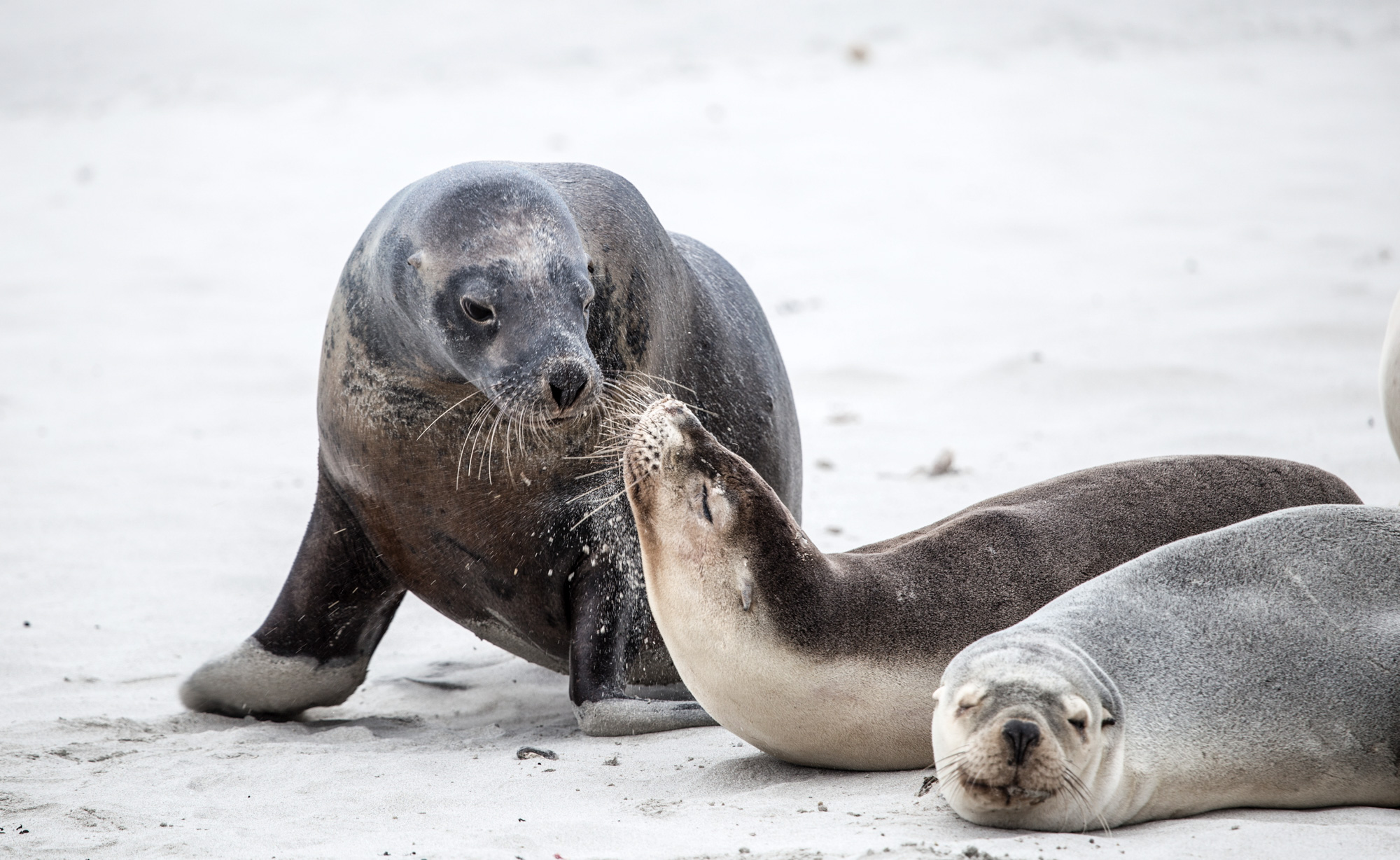
Seal Bay
Fascinatingly, Dr Rismiller now finds herself addressing tech concerns – corporations who want to learn the secret of the echidna’s ability to enter a state of torpor, effectively what SF calls suspended animation, with an eye to replicating it in humans tasked with travelling interplanetary distances. I have a dim view of the corporatisation of scientific endeavour (while remaining realistic about how such painstaking research into our own planet has to get funding somewhere), but my sci-fi brain happily conjured a possible future of planet-hopping from star system to star system seeking, and never succeeding in finding, an alien creature as wonderful and absurd as we have here on earth.
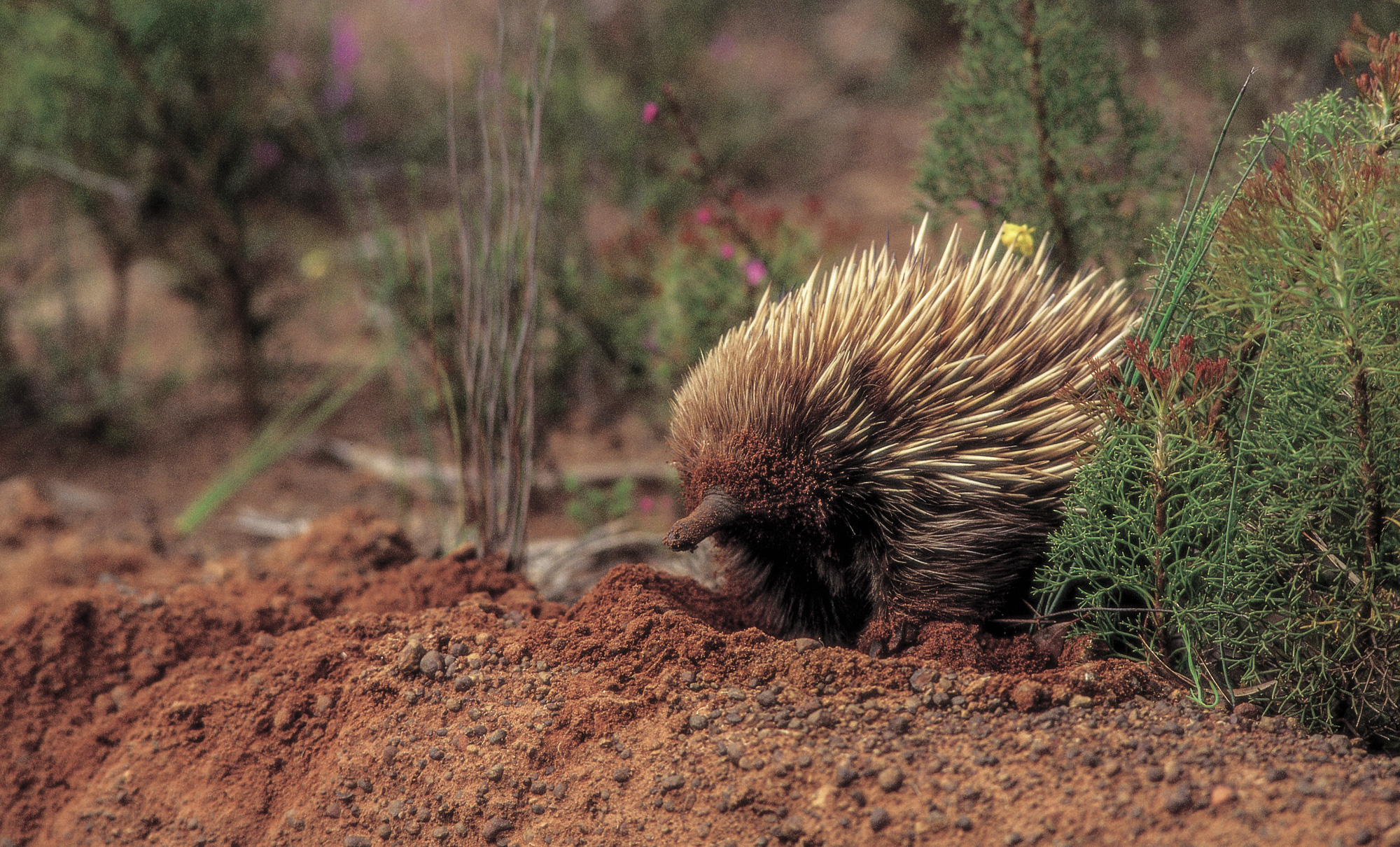
The elusive echidna
Kangaroos abound – no pun intended – but koalas are also pretty widespread on Kangaroo Island: park up by a grove of gumtrees, look upwards and you’ll soon start seeing them slumped in the crooks of trees, red eyes blearily glaring, those sharp slate-coloured claws on show. At Seal Bay, those mammals can be seen in great numbers on a 45-minute guided walk, flopped on the sand or lolloping, comically ungainly, into the surf. And everywhere you look, there’s the spark of the Superb Fairy-wren: comic-strip blue from the crown of its round little head to its bouncy upright tailfeathers, singularly charming, and understandably frequently named Australia’s favourite bird.
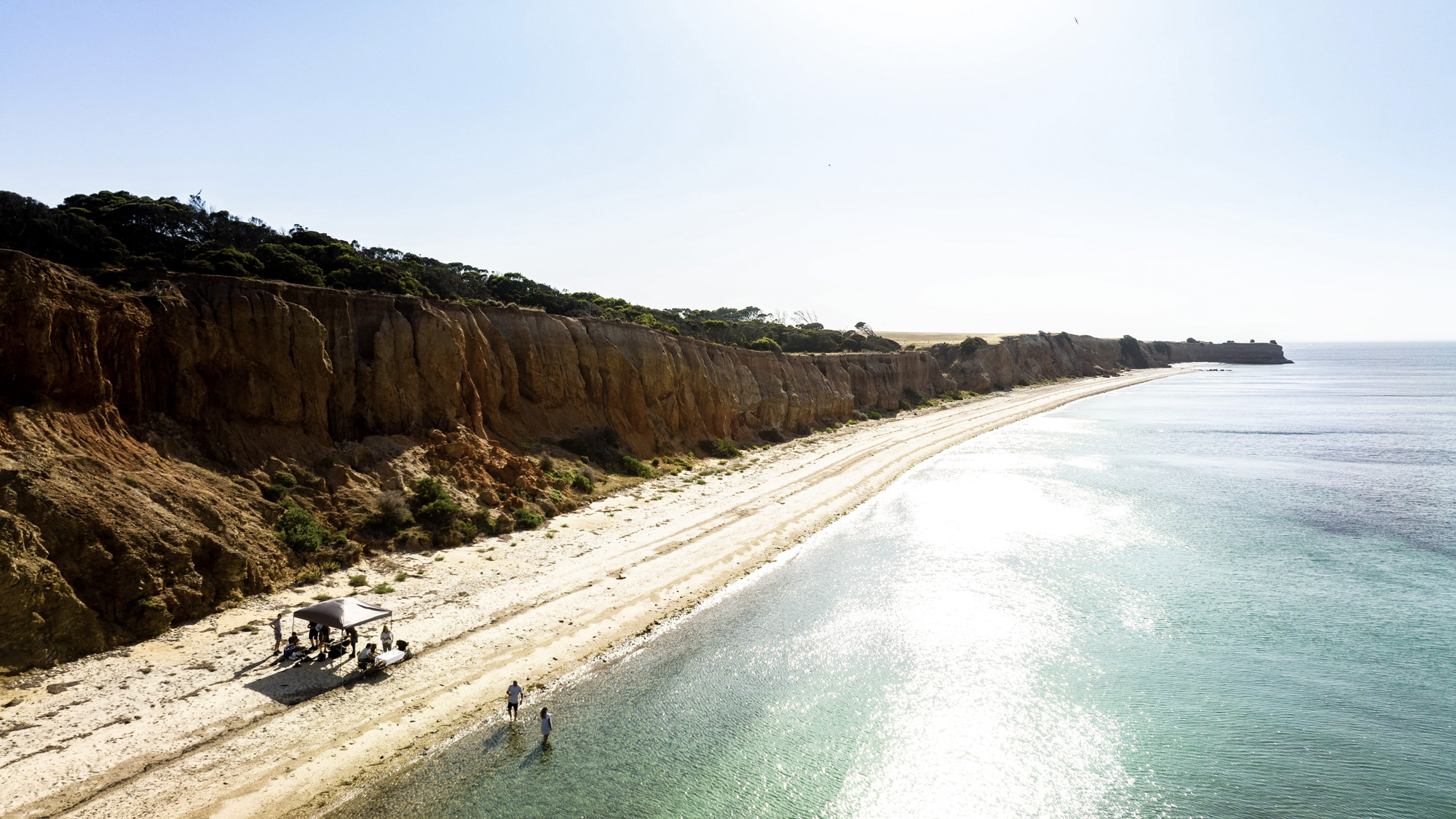
Oceanview Eco Villas
The island’s admirably straightforward approach to naming extends to one of its great geological wonders. The Remarkable Rocks live up to their prosaic title: a series of gigantic granite boulders, set on a grassless plain stippled with orange lichen, that seem caught mid-transformation: twisting, curving, bucking, dripping. One rears up like a wolf’s muzzle aimed to the vast sky; another clump, hollowed out from beneath by sea and air, resembles the underside of an enormous petrified fungus.
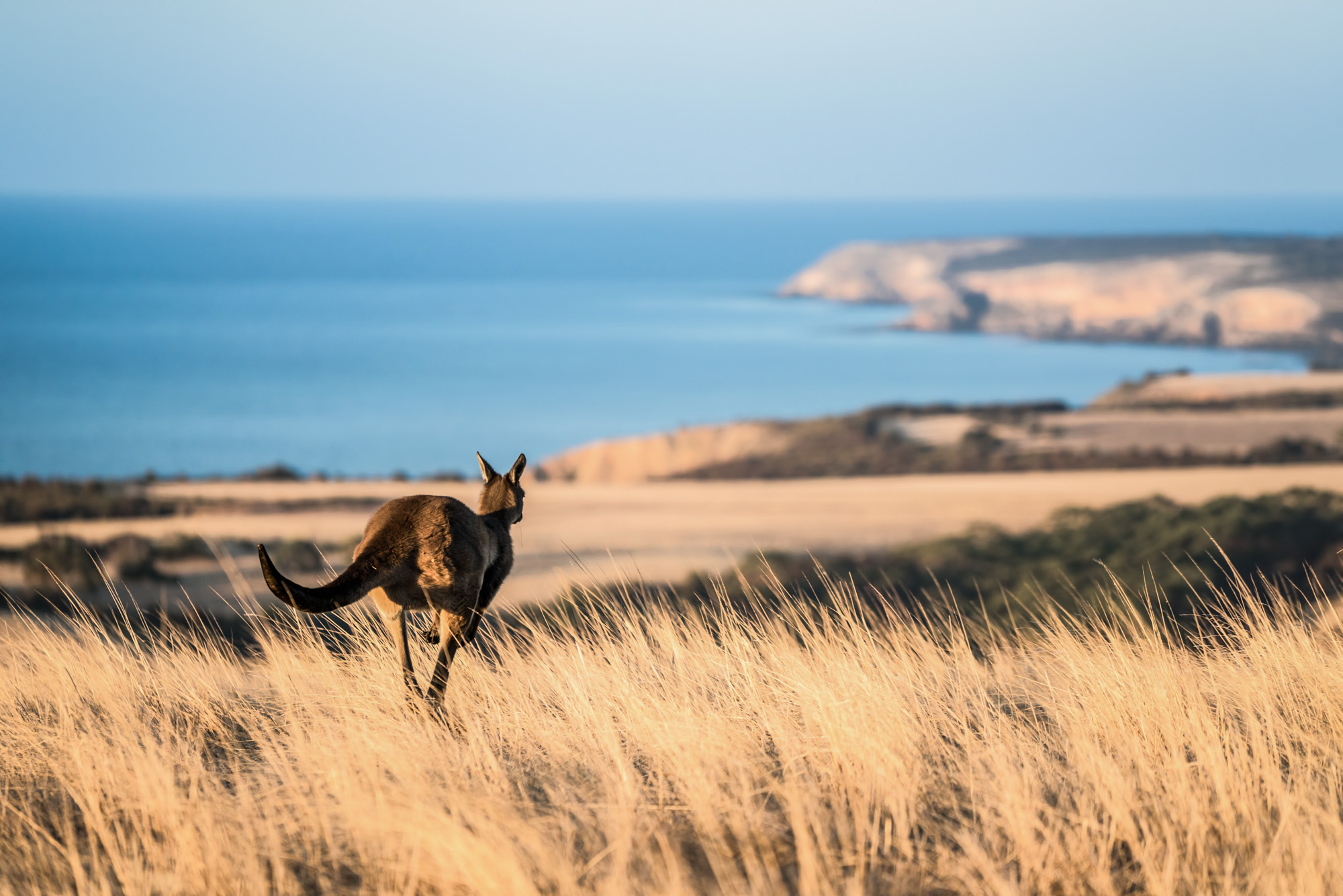
Middle River, Kangaroo Island
Humans have been up to all kinds of things on Kangaroo Island too. At the far eastern tip of the island, where a still-functioning lighthouse beams out from Cape Willoughby towards the mainland, convivial Sea Dragon Lodge comprises a series of large-scale villas from which to observe the dramatic seascape of Pink Bay and the ever-changing weather that moves over it. The numerous tours and activities on offer (including a fascinating tour of that lighthouse) make this quite a different proposition from Ocean View’s more hands-off, self-guided approach, but I was happy to embrace both. It’s pleasing to feel you’ve happened upon natural wonders and strange sights, but there’s a lot about Kangaroo Island I’d have missed – or never known about – were it not for the enthusiastic expertise of the guides and academics I met. At times like this – far from home, dwarfed by natural wonders under a sun that feels almost domineeringly close – I recall the title of another old book. Earth is the alien planet. C
For more information visit southaustralia.com